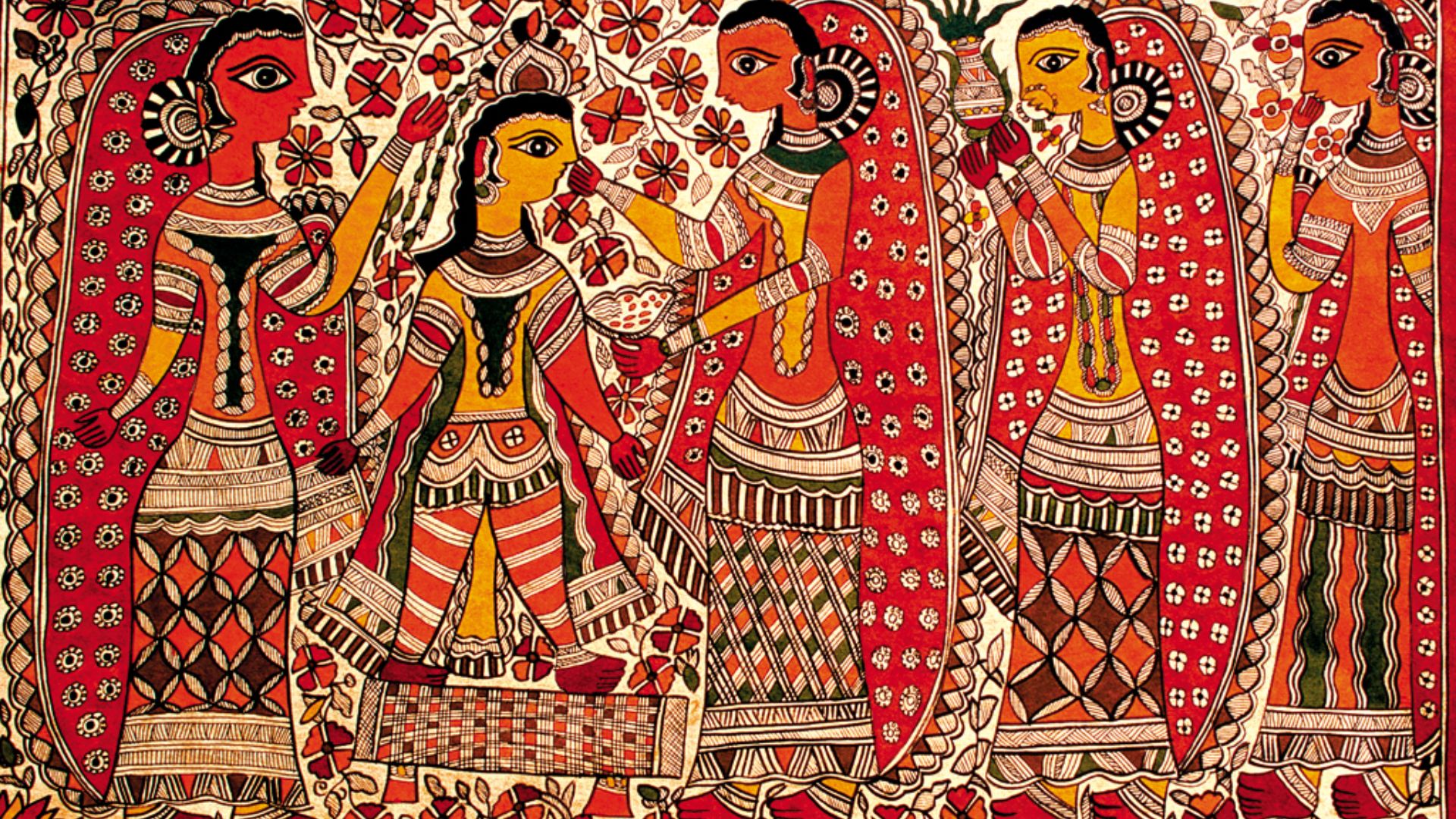“It happened in front of me,” recounts Padma Shri award-winning artist Manu Parekh to indianexpress.com, reflecting on the transformation of Madhubani paintings from traditional wall art to paper. This shift began in 1965 when Bhaskar Kulkarni, an Indian government aid worker, traveled from Delhi to the Mithila region in Bihar.
Kulkarni proposed the innovative concept of transferring traditional wall paintings to paper. To support this transition, the government supplied artists with paper and colors at no cost. At that time, Parekh was working for Pupul Jayakar, an Indian cultural activist and art historian, at the All India Handicrafts Board (AIHB). Jayakar had directed Kulkarni to Mithila following a suggestion from then Prime Minister Indira Gandhi to “do some artwork in Bihar.” The resulting artwork was marketed and sold through government-run handicraft stores across India, thereby broadening the audience for Madhubani art, as noted by the Madhubani Art Centre.
Today, Madhubani paintings have expanded beyond their traditional mediums to include canvas, paper, fabric, and digital formats.
Predominantly created by women, this art form has not only endured over centuries but has also adapted to remain relevant in the modern art scene. “Madhubani art is not merely a form of expression but a crucial cultural asset of the Mithila region. It embodies the region’s rich traditions, folklore, and mythology, serving as a living repository of Mithila’s cultural heritage,” comments Madhubani artist Vidushini Prasad. By continuing this artistic tradition, artists ensure that these cultural narratives and practices are preserved for future generations.
Madhubani painting plays a vital role in preserving and promoting the cultural heritage of the Mithila region. “Women have been the primary custodians of Madhubani painting since its inception. This art form was passed down from mothers to daughters, with each generation adding its unique touch while maintaining traditional techniques and motifs,” explains Manisha Jha Mishra, a national award-winning Mithila painter.
Historically, Mithila women adorned the walls and floors of their homes with intricate designs for special occasions and festivals. Today, women continue to lead the field, earning national and international recognition and overcoming social barriers to establish themselves as prominent artists and entrepreneurs. Madhubani painter Ganga Devi is a notable example. “Ganga Devi became a celebrity,” says Mishra, particularly after Tokio Hasegawa, director of the Mithila Museum in Japan, visited India in 1972 and was impressed by one of her paintings.
“Women artists like me promote Madhubani art through workshops, exhibitions, and social media, making it accessible to a global audience. I manage one of the largest Facebook communities dedicated to Madhubani art, with over 35,000 members, most of whom are women from India and abroad,” Prasad shares.
She also notes, “Women have embraced technology, creating and sharing their paintings on social media. Many rural women are now also making reels, which has empowered them. During Covid, when events and exhibitions were halted, many artists used social media to sell their work and sustain themselves.”
Balancing tradition and innovation is one of the key challenges for Madhubani artists today. According to Mishra, it is essential to understand both symbolism and cultural context to advance this art form. Many artists have successfully integrated traditional motifs and techniques with contemporary issues and aesthetic preferences. “The culture remains constant, but the world around us changes. My work reflects the connection between these two worlds,” Mishra explains.
Some artists experiment with new color palettes and materials while retaining Madhubani art’s distinctive style and symbolism. Prasad highlights, “I preserve traditional themes and techniques while incorporating vibrant colors and modern designs to attract urban and global audiences.”
Parekh offers a different view: “Madhubani art is folk art deeply rooted in tradition. There is no need for additional variety when a woman sees her mother’s work. They are not modern painters.” He emphasizes the importance of understanding cultural roots for artistic growth: “The more one comprehends their mother’s art, the greater their advancement. It’s individual-dependent, reflecting our profound cultural heritage.”
Madhubani art faces several challenges in the contemporary art market, including a tendency to be undervalued compared to modern or contemporary art. “Most galleries don’t showcase folk art, making it difficult to display in galleries,” Prasad notes.
Ridhima Srivastav, founder of Weave Hand, an online marketplace supporting artisans of handmade products, observes, “Balancing traditional methods with the demands of the commercial art market can be challenging. There is a risk of losing authenticity and cultural significance in the pursuit of profit.”
“Segregation” is a significant issue, according to Mishra. “Outside India, Madhubani paintings aren’t categorized as folk art but as simply art. When viewed as art, they are appreciated for their artistic merit without labels or classifications.”
Despite these challenges, there are significant opportunities. Madhubani art has evolved into a global phenomenon, transcending caste distinctions and geographic boundaries. “The increasing global interest in indigenous art forms has created new markets for Madhubani paintings. E-commerce platforms have facilitated direct connections between artists and global customers, bypassing traditional intermediaries,” says Srivastav.
Exhibitions, workshops, and collaborations with international artists and institutions have enhanced awareness and appreciation of Madhubani art. This global presence has opened new markets and opportunities for Madhubani artists, as noted by Mithila painter Yanshika Priya.







